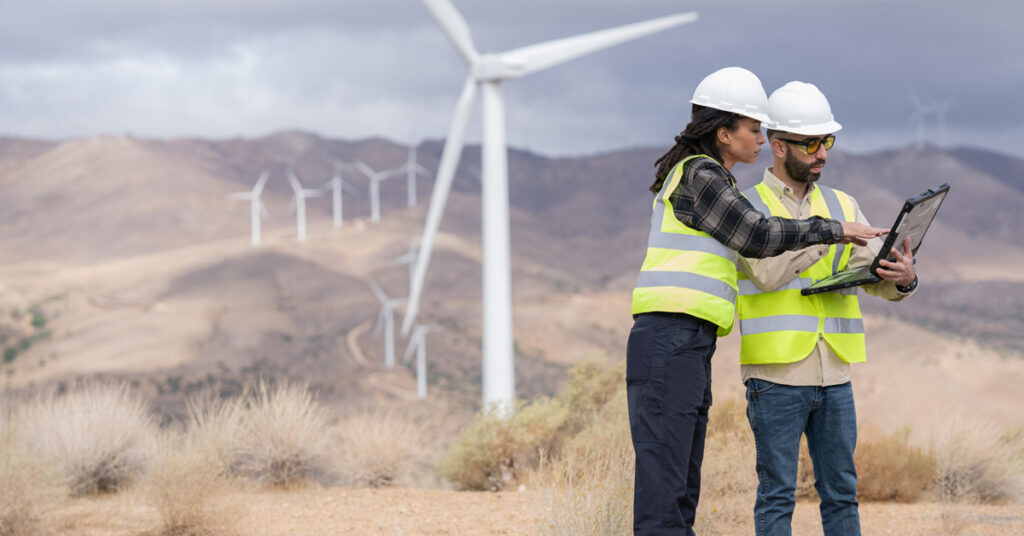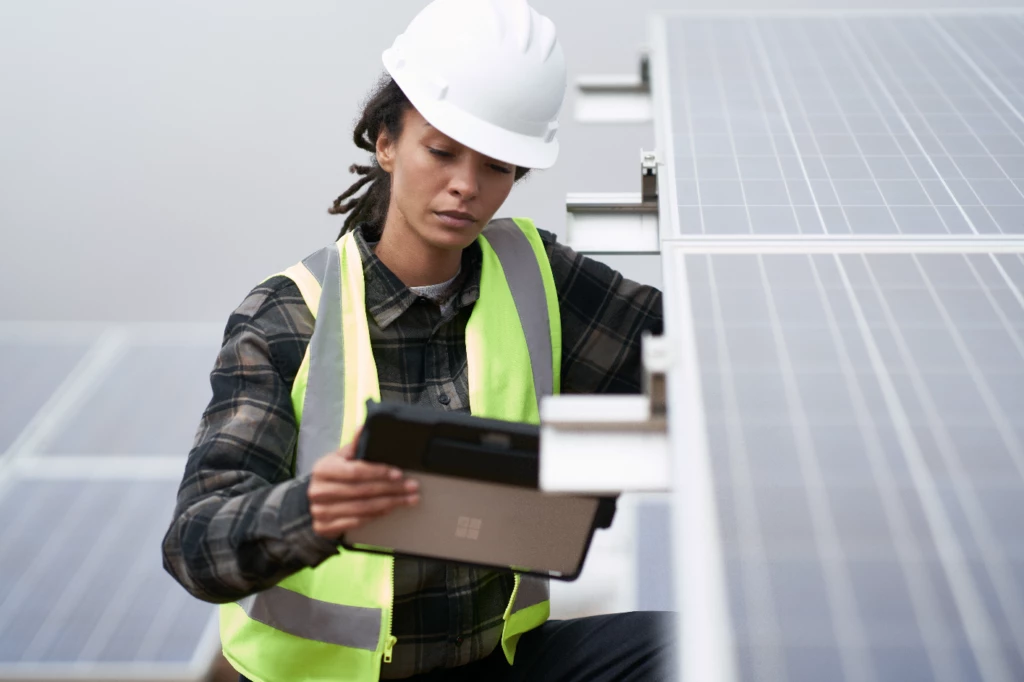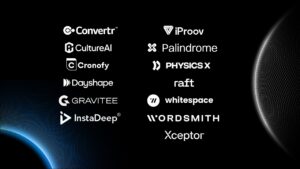
Empowering the sustainable economy with data-driven clean energy
In the previous century an abundant supply of hydrocarbons powered industrial development, giving rise to the modern economy whose benefits underpin our societies to this day. But in an era of climate change, only clean energy can deliver a sustainable economic model, which requires data to ensure a stable supply. So how can communities and businesses use data-driven technology to accelerate their journey to sustainability?
Digital consumption is a growing part of the global economy. But even non-digital trade in goods and services increasingly depends on data to function effectively. Just as early economic progress was determined by a steady supply of hydrocarbons, the fourth industrial revolution will stand or fall on its ability to exchange and manage data. Our sustainable future depends on it.
The compliance challenges
Businesses and communities have recognised the urgent need to reduce carbon emissions, and environmental regulations are increasingly exacting. This requires collective measures to quantify and mitigate environmental impacts. But the burden of compliance on organisations is potentially onerous.
Practical digital tools
For a start, it involves recording your company’s environmental footprint over time and reporting to stakeholders. Recycling, input substitution and the use of carbon offsets all need to be monitored to optimise resource management. Without practical digital tools, most businesses struggle to meet these challenges, or act on them effectively.
Sustainability insights in the cloud
Collaboration with our partners and customers confirmed that automation and data connectors are essential for turning good intentions into action on carbon emissions. We therefore developed a suite of industry-specific cloud offerings that could marshal the capabilities of the entire Microsoft cloud. We wanted to give customers the benefit of accurate real-time data insights to help drive agility and innovation, as well as more sustainable operations.
Accelerate progress on emissions

The Microsoft Cloud for Sustainability helps organisations accelerate their progress in recording, reporting, reducing and replacing their emissions. It provides integrated and automated data insights drawn from across the business to guide more effective actions.
For example, scattered emissions data can be presented in a unified view to enable better reporting. Companies can offer sustainability scorecards to customers who’d like to track progress against their own emission reduction targets. Microsoft Azure also enables you to pinpoint emission areas that require special attention.
Flexible systems to manage intermittent supply
Actions at a company or individual level drive progress towards net zero. But sharing data at an industry-wide or even global level adds greater value still. This is particularly true of clean energy, which needs high quality, shared data to balance supply and demand for the grid.
Energy from renewable sources such as wind tends to be intermittent, which legacy energy systems weren’t designed to handle. High levels of data integration and automation can make these systems more flexible, however. For example, by enabling intelligent demand management in the cloud, it becomes easier to balance the grid.
“Today we still have a 20th century grid, contorting itself to meet the interdependent demands of clean but intermittent renewables, growing demand, accessible and affordable energy for all, and energy security. We need a new 21st century grid that can seamlessly link demand and production, and this will only be possible with real-time, robust data.”
Mike Barry, Sustainable Business Expert
Shared data enables collective action
Market stakeholders need to share data freely to make this approach work in practice. But is the market ready or able to deliver this unprecedented level of data-sharing and cooperation, in what is supposed to be a competitive environment? Until regulators decide to step in with legislation that actively requires companies to share data, businesses need to accelerate their own transition to a more sustainable future. Fortunately, the cloud offers a highly flexible means of doing this.
Sustainable solutions in the cloud
At Microsoft, we’re committed to delivering trusted, integrated, data-driven solutions to accelerate the energy transition. Microsoft Azure and Microsoft Energy Data Services enable you to deploy cloud, data, and AI for improved KPIs that guide more effective operational decision-making and provide best-in-class sustainability metrics. With useful and reliable data insights available in the cloud as a single source of truth, your company’s culture can get aligned around sustainable growth.
Foundations for a lower-carbon future
By embracing the potential of Microsoft Cloud, you put in place the digital foundations for a lower-carbon future in which shared data and industry-wide collaboration can flourish. Learn more about Microsoft’s Cloud for Sustainability and other initiatives to accelerate your journey to net zero, such as the use of quantum computing to solve problems around the shift to renewable energy sources.
Find out more
What’s new with Microsoft Cloud for Sustainability – Microsoft Industry Blogs
About the author

Kevin is responsible for developing the UK strategy in energy and utilities, supporting the enterprise commercial team to help clients achieve more. Working as part of the leadership team in Manufacturing and Resources for Microsoft UK, he supports the development of new digitally enabled markets, helping Microsoft continue its transformation from a technology vendor to a trusted partner.
Kevin is an Honorary Research Fellow with Warwick Manufacturing Group, supporting leading academic work to help solve infrastructures challenges in cyber security. He also works across government, academia and industry within the Construction Leadership Council, helping to accelerate digital transformation within the built environment.




